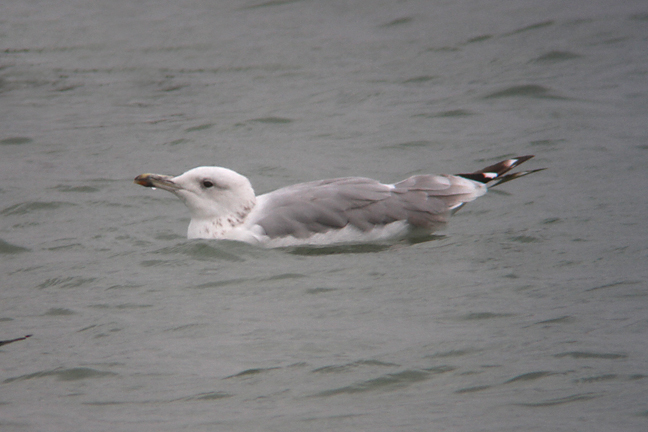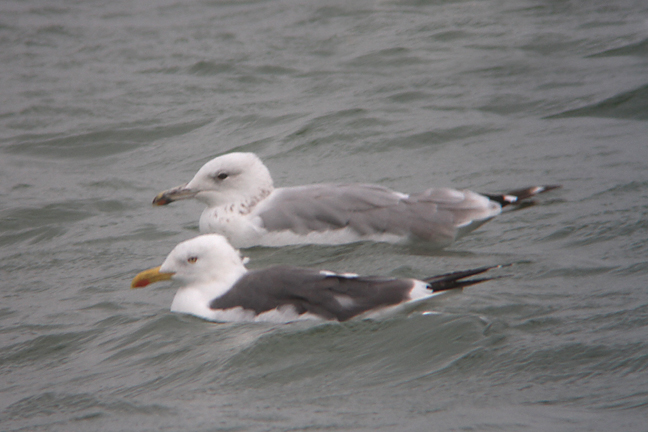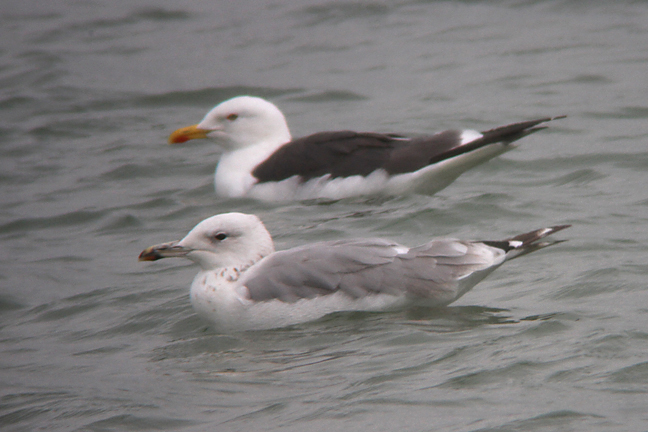The gulls were gathered at Cotesbach landfill site in their thousands again today. The weather wasn't quite as bad as the forecast suggested, so the visibility was reasonable. The working face of the tip was a bit too high for me to see the feeding gulls well, but a YLG moulting into 1st-winter plumage showed well on the near edge of the mound.
I moved to view the gulls resting and bathing in the quarry. Amongst the gulls was a splendid juvenile Herring Gull, which was attired with a big yellow ring with the code F+C. This gull was ringed in Gloucester.
A 3rd year Caspian Gull flew on to the pool in the quarry, but only took a drink and then flew off. Luckily I relocated it in the afternoon at Shawell A5 Lagoons. It showed very well for much of the afternoon. It was moulting its primary feathers although some old ones were still present but quite faded. A new primary is visible in the photographs though it is not fully grown. The bird shows the typical profile, which seems to be most obvious at this age, a smallish head and a long body with a low profile. The small dark eyes are set forward and the bill is typically washed out and slender. Also note the 'pencil markings' on the side of the neck.
The head is perhaps not the smallest I've seen, but it is within the range, as far as I can determine by studying many photographs. The head size varies just like in other similar gull species. This birds head still looks small in relation to the long body.
I moved to view the gulls resting and bathing in the quarry. Amongst the gulls was a splendid juvenile Herring Gull, which was attired with a big yellow ring with the code F+C. This gull was ringed in Gloucester.
A 3rd year Caspian Gull flew on to the pool in the quarry, but only took a drink and then flew off. Luckily I relocated it in the afternoon at Shawell A5 Lagoons. It showed very well for much of the afternoon. It was moulting its primary feathers although some old ones were still present but quite faded. A new primary is visible in the photographs though it is not fully grown. The bird shows the typical profile, which seems to be most obvious at this age, a smallish head and a long body with a low profile. The small dark eyes are set forward and the bill is typically washed out and slender. Also note the 'pencil markings' on the side of the neck.
The head is perhaps not the smallest I've seen, but it is within the range, as far as I can determine by studying many photographs. The head size varies just like in other similar gull species. This birds head still looks small in relation to the long body.
 |
| 3rd-winter Caspian Gull |
 |
| 3rd-winter Caspian Gull |
 |
| 3rd-winter Caspian Gull |
 |
| 3rd-winter Caspian Gull |
 |
| 3rd-winter Caspian Gull (note the body length compared to the LBB Gull) |
 |
| 3rd-winter Caspian Gull with Intermedius LBB Gull |
This bird is a calendar year younger than the one I saw in July - see HERE
Comments are welcomed - even if you disagree with my ID.
Of interest, all of the above photos were taken using a Canon DSLR attached to my scope.